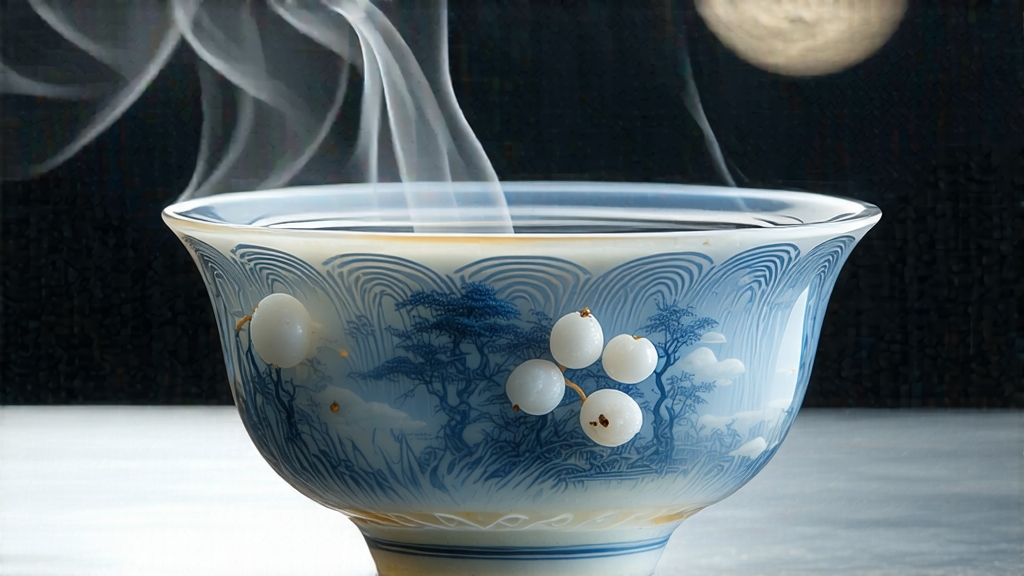
Bai Hao Yin Zhen—literally “White Hair Silver Needle”—is the most aristocratic member of the white-tea family, a tea so refined that emperors once rationed it by the gram and Tang-dynasty poets compared its shape to frost-covered bamboo shoots. To understand this tea is to step into a world where time is measured not in seconds but in lunar phases, where the scent of fresh rain on gardenias can be trapped inside a single downy bud, and where the difference between mediocrity and transcendence is the width of a silvery trichome.
History: From Imperial Tribute to Global Muse
Although white tea as a category was first recorded in the Song dynasty (960-1279), Yin Zhen did not appear under its current name until the late Ming, when the coastal county of Fuding in Fujian province perfected the technique of air-drying the unopened buds of the Da Bai cultivar. The Qing court quickly designated the tea as “gong cha” (tribute tea), and legend claims that Empress Dowager Cixi used the infusion to rinse her mouth each morning in the belief that its amino acids preserved youth. By 1891 Fuding merchants were exporting silver needles via the treaty port of Fuzhou to London, where the House of Harrods sold it as “Chinese Down Tea” at prices exceeding first-flush Darjeeling. In the 1970s, German aromatherapists rediscovered its high theanine content, sparking modern scientific interest; today it is the benchmark against which all delicate teas are judged, yet still produced in quantities smaller than a single day’s output of Keemun.
Terroir and Harvest: One Bud, One Universe
Authentic Bai Hao Yin Zhen comes only from two protected micro-zones: the granite hills of Taimu Mountain in Fuding and the red-clay terraces of Zhenghe county further inland. Both share a subtropical maritime climate—mild winters, fog-draped springs, and acidic soils rich in quartz and humus. The Da Bai (Big White) tea bush, a landrace cultivar with leaves twice the size of common tea, awakens in mid-March when night temperatures hover around 10 °C. Pickers must pluck the bud the instant it reaches “fish-length”—a traditional unit equal to the first joint of a woman’s little finger—before the leaf unfurls and the trichomes begin to shed. A skilled picker gathers barely 500 g of buds in a dawn shift; 30,000 buds are required for one jin (500 g) of finished tea.
Craft: The Art of Letting Go
White tea’s minimalism is deceptive. Once harvested, the buds are laid upon bamboo sieves one finger-width apart and wheeled into a two-stage withering chamber. The first stage, “living withering,” lasts 36–48 h at 22 °C and 65 % relative humidity; enzymatic oxidation is allowed to proceed until the bud’s moisture drops to 40 %. The second stage, “dreaming withering,” is unique to Yin Zhen: the sieves are stacked in a loft where mountain breezes and faint moonlight finish the drying for another 24 h. No rolling, no pan-firing, no charcoal baking—only the whisper of air and time. Master crafters judge readiness by the sound a bud makes when dropped onto porcelain: a crisp “ting” like a distant temple bell. The final moisture must be 5 % or lower; above that, the tea will age poorly; below, the aroma becomes hollow.
Grades and Authenticity
Within the narrow category of Yin Zhen, three unofficial grades circulate among specialists. “Imperial Needle” consists entirely of buds picked before Qingming festival, each sheathed in such dense down that it appears frosted. “Standard Needle” blends early and mid-season buds, still entirely bud but marginally larger. “Garden Needle,” often sold simply as white tea, may contain one leaf-and-bud sets and lacks the silvery luster. Authenticity markers are tactile: a true needle feels velvety yet firm, bends without snapping, and carries the scent of fresh lychee when rubbed warm between palms.
Chemistry in the Cup
Yin Zhen’s elegance is rooted in numbers. Laboratory analysis shows 4.2 % theanine, 6.8 %